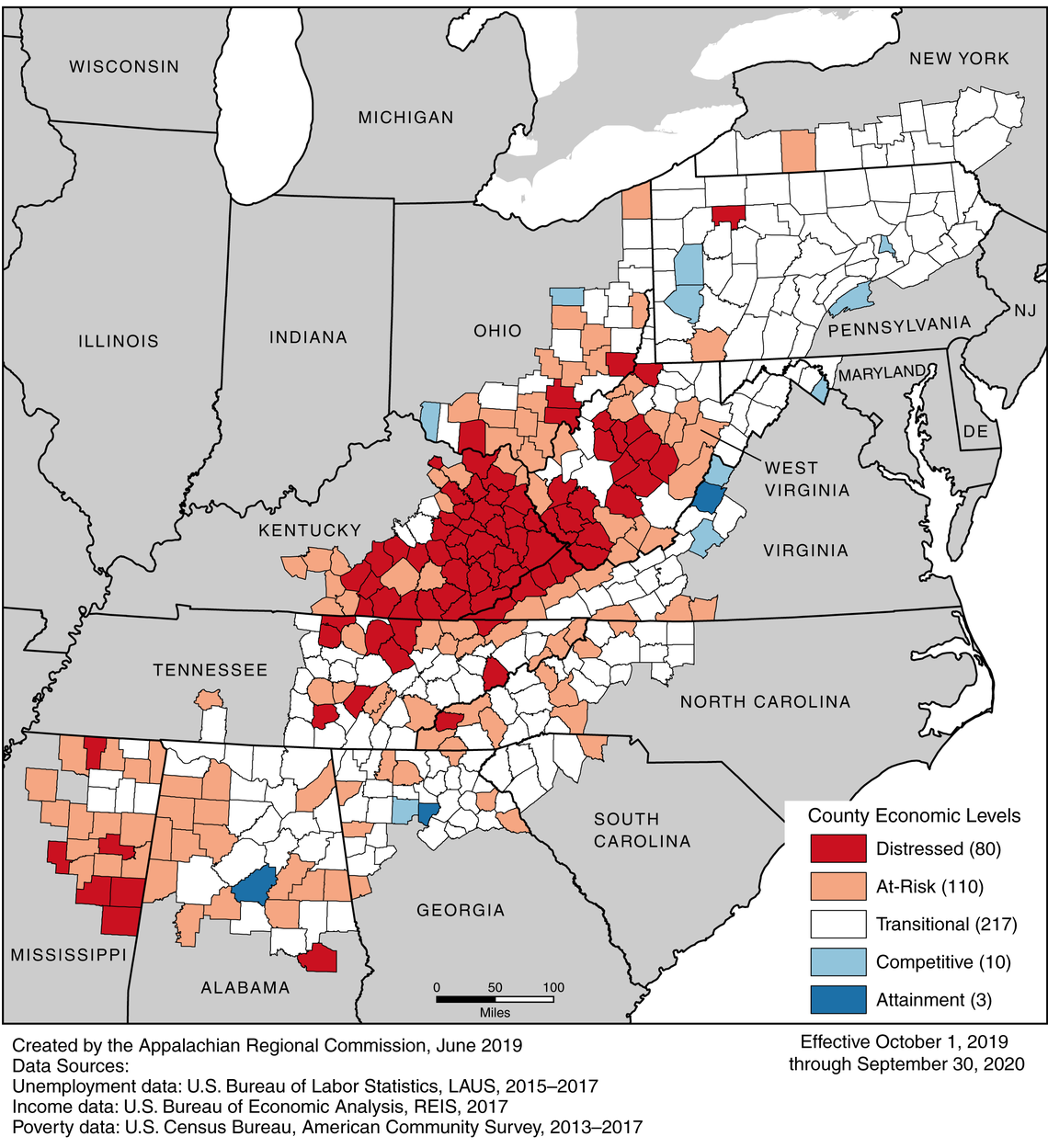Income Falls in Several Appalachian Kentucky Counties as Coal Fails to Bounce Back

By Will Wright
June 26, 2019 - New data released by the Appalachian Regional Commission Tuesday show per capita annual income fell by more than $1,000 in several Eastern Kentucky counties from 2016 to 2017, the most recent year made available by the ARC.
In Bell County, per capita income fell by more than $1,100, and Whitley County saw a drop of $1,080.
A total of nine counties in Appalachian Kentucky saw a decrease in per capita income from 2016 to 2017, according to the ARC.
The data are part of an annual report issued by the ARC that details poverty, income and unemployment rates throughout Appalachia, which includes 420 counties in Kentucky, West Virginia and 11 other states.
Of the 80 counties that will be considered economically distressed by the ARC in 2020, nearly half are in Eastern Kentucky.

The region’s economic stagnation has stemmed largely from the fall of the coal industry, which has failed to recover in any significant way from a sharp decline that began in about 2012.
The number of coal-related jobs plummeted from more than 11,000 in 2012 to less than 4,000 in the first quarter of 2019, according to data from the Kentucky Energy and Environment Cabinet.
Since President Donald Trump took office in January 2017, the number of coal jobs in Eastern Kentucky has remained flat at about 3,960 jobs.
A number of reports, including one from the U.S. Department of Energy in 2017, cite cheap natural gas prices as the driving factor behind coal’s decline. Other factors include more stringent environmental regulations implemented by the Obama administration, and that the region’s remaining coal seams are more difficult and expensive to access.
According to ARC data, income has increased in nearly every Appalachian Kentucky county since 2010 — Letcher County saw the only decrease during that time — and poverty rates have increased in 34 of the 54 counties.
Per capita income in Appalachian Kentucky is less than half the nationwide average of $42,860, and poverty rates are nearly double.
One of the main ways the ARC uses this data is to determine match rates for its funding allocations, said Wendy Wasserman, the ARC’s spokeswoman. Most ARC grants require recipients to match some percentage of the money allocated. If a county is considered distressed, the match requirement for grants is less, she said.
“The result is directing funds to the places which need it most,” Wasserman said.
In fiscal year 2018, for example, 64 percent of the ARC’s investments had a direct impact on distressed communities, she said.
The entire Appalachian region has seen improvement in some areas.
Fiscal year 2020 will see the lowest number of distressed counties since 2008, and 29 counties showed a positive shift in their economic status.
Still, the economic gap between Appalachia and the rest of the nation has continued to grow, and Appalachian Kentucky continues to lag behind the rest of the region.
The average per capita income in Appalachian Kentucky, for example, sits at about $19,800, while the regional average is $31,300, and poverty rates increased in 22 Appalachian Kentucky counties from 2016 to 2017.
“Parts of the Appalachian Region face significant economic challenges compared to the rest of the country, and by releasing this data publicly in an accessible format, ARC is seeking to ensure awareness of these challenges, and to inform policymakers at all levels,” ARC Federal Co-Chair Tim Thomas said in a news release Tuesday. “ARC and our state partners use this data to direct critical investments toward distressed areas, and I am pleased to see net improvements in many parts of the Region compared to previous years.”

